Guido Galletti (1893-1977) was a renowned Italian sculptor, celebrated for his iconic Christ of the Abyss․ His work spanned multiple genres and gained international recognition through exhibitions like Venice Biennale and Rome Quadriennale, significantly influencing modern sculpture and leaving a lasting cultural impact․
1․1 Who was Guido Galletti?
Guido Galletti was a prominent Italian sculptor born in London in 1893 and raised in Genoa, where he later passed away in 1977․ Known for his dynamic artistic style, he explored themes of symbolism and intimism, creating works that reflected both classical and modern influences․ Galletti’s early career was marked by a deep connection to his family and a passion for art, which shaped his unique sculptural approach․ His personal life, including his marriage and family, often inspired his intimate and emotionally charged creations․ As a dedicated artist, Galletti balanced his creative pursuits with a strong sense of civic responsibility, leaving a lasting legacy in Italian art and culture․
1․2 Importance of Galletti in Italian Art
Guido Galletti holds a significant place in Italian art history, renowned for his contributions to sculpture and his ability to blend classical techniques with modern expression․ His participation in major exhibitions like the Venice Biennale and Rome Quadriennale underscored his prominence․ Galletti’s work, ranging from symbolic compositions to intimate pieces, reflected a deep emotional resonance, making him a key figure in the evolution of Italian art․ His iconic Christ of the Abyss became a cultural symbol, attracting global attention and solidifying his legacy․ Through his art, Galletti influenced modern sculpture and left an enduring impact on Italy’s artistic identity, making him a celebrated name in the nation’s cultural heritage․
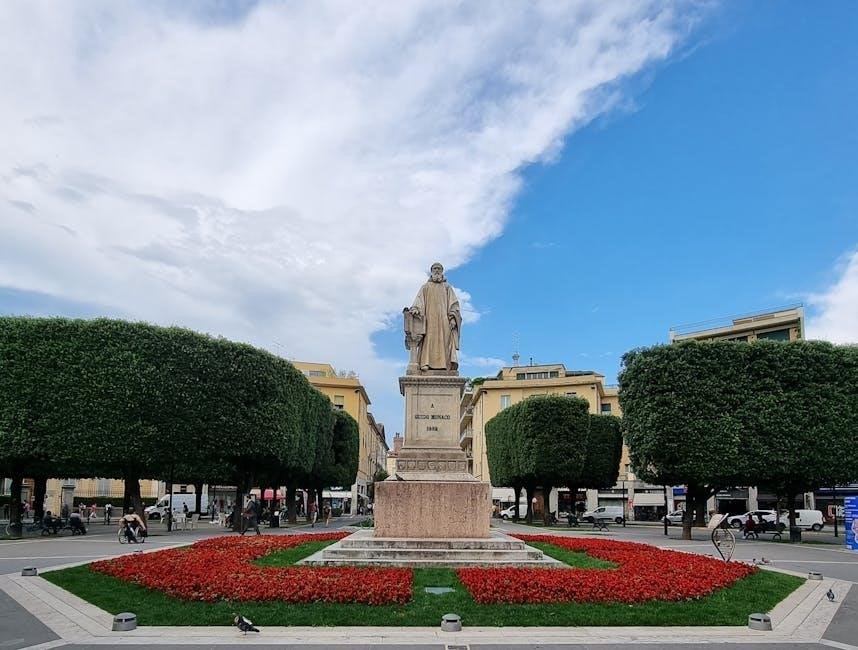
Early Life and Education
Guido Galletti was born in London in 1893, developing an early passion for sculpture․ His formal training and influences shaped his artistic foundation, leading to a distinguished career․
2․1 Birth and Family Background
Guido Galletti was born in London on March 22, 1893, to an Italian family․ His father, Luigi Galletti, was an artist, which likely influenced Guido’s early interest in sculpture․ The family’s artistic background and Italian heritage played a significant role in shaping his cultural identity and creative pursuits․ From a young age, Galletti exhibited a natural talent for art, which his family nurtured, setting the stage for his future as a prominent sculptor․ His upbringing in a creative environment laid the foundation for his eventual contributions to Italian art and culture․
2․2 Early Interest in Sculpture
Guido Galletti exhibited a natural inclination toward sculpture from an early age, likely influenced by his artistic family background․ His father, an artist himself, encouraged Guido’s creative explorations, fostering his interest in shaping materials into expressive forms․ By his teenage years, Galletti had already begun experimenting with clay and stone, demonstrating a remarkable aptitude for capturing human and natural forms․ This early passion laid the groundwork for his formal training and eventual mastery of sculpture, which would become his defining artistic medium․ His innate talent and dedication set him on a path to becoming one of Italy’s most celebrated sculptors․
2․3 Formal Training and Influences
Guido Galletti pursued formal artistic training in Italy, refining his sculptural techniques and developing a deep understanding of classical and contemporary art․ His early work was influenced by Nordic sculptors, particularly Constantin Meunier, whose emphasis on form and expression resonated with Galletti’s evolving style․ Additionally, the works of Jacques Lipchitz inspired his exploration of naturalistic and monumental compositions․ These influences, combined with his innate talent, shaped his artistic identity․ Galletti’s formal education and exposure to diverse artistic movements laid the foundation for his later success, enabling him to create works that bridged tradition and innovation, earning him recognition in both national and international art circles․
Career as a Sculptor
Guido Galletti emerged as a prominent sculptor, renowned for works like Christ of the Abyss․ His career highlighted a blend of monumental and intimate pieces, showcased in major exhibitions․
3․1 Breakthrough and Notable Works
Guido Galletti’s breakthrough came with the creation of Il Cristo degli Abissi (Christ of the Abyss) in 1954, a submerged bronze statue in the Mediterranean Sea near San Fruttuoso․ This iconic work, symbolizing Christ’s victory over evil, became a landmark for divers and pilgrims․ Galletti’s participation in major exhibitions like the Venice Biennale (1930-1948) and Rome Quadriennale (1935-1959) showcased his artistic prowess․ His notable works include Prigione del sogno, reflecting early symbolic influences, and Tondo con la moglie e la figlia Giovanna, a tender intimate piece from the 1915-1920 period, demonstrating his stylistic evolution from symbolism to intimism․
3․2 Participation in Major Art Exhibitions
Guido Galletti consistently participated in prominent art exhibitions, showcasing his works nationally and internationally․ His presence at the Venice Biennale from 1930 to 1948 and the Rome Quadriennale from 1935 to 1959 highlighted his significance in Italian art․ Internationally, he exhibited at events like the 1925 Paris Art Exhibition, 1929 Barcelona, and 1935 Vienna․ These platforms allowed Galletti to display works such as The Fisherman and The Victory, blending classic and naturalistic styles․ His contributions to these events solidified his reputation as a master sculptor and expanded his influence across Europe and beyond, marking him as a key figure in 20th-century art․
3․3 Evolution of Artistic Style
Guido Galletti’s artistic style evolved significantly over his career, reflecting shifting influences and creative explorations․ Early works, such as Prigione del sogno, showcased symbolism, while pieces like Tondo con la moglie e la figlia Giovanna (1915-1920) embraced intimism, focusing on emotional depth․ In the 1920s, his work was influenced by Nordic sculptors like Constantin Meunier, evident in Martellatore (1926)․ By the 1930s, Galletti shifted toward a more classical and naturalistic approach, as seen in Nudo di giovinetta seduta (1934)․ His later sculptures, such as La Vittoria Vigilante, combined monumental forms with emotional resonance, cementing his legacy as a versatile and innovative artist․
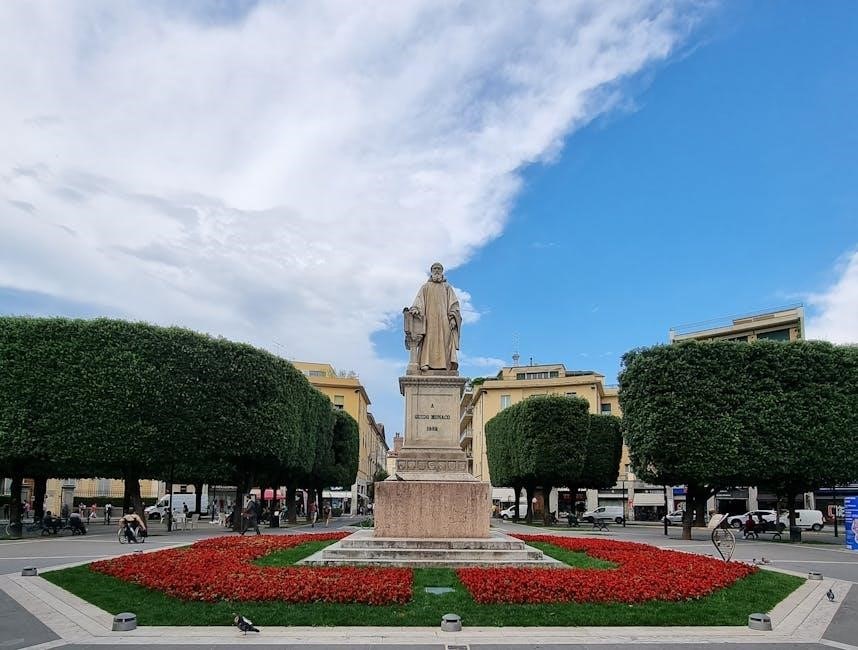
The Christ of the Abyss
Guido Galletti’s iconic Christ of the Abyss is a submerged bronze statue of Jesus Christ, placed in the Mediterranean Sea off San Fruttuoso in 1954․ It stands as a poignant tribute to divers and sailors lost at sea, symbolizing peace and faith․ The statue’s outstretched arms invoke divine protection, attracting divers, pilgrims, and tourists worldwide, blending art, nature, and spirituality in a unique underwater setting․
4․1 Concept and Creation
Guido Galletti’s Christ of the Abyss was conceptualized to honor divers and sailors who lost their lives at sea․ The statue, created in 1954, features Jesus with arms raised in a gesture of invocation, symbolizing peace and divine protection․ Commissioned by Italian diver Duilio Marcante, it was designed to serve as both a memorial and a place of prayer․ The bronze sculpture, weighing 260 kilograms, was cast in Galletti’s studio and placed underwater off San Fruttuoso, near Genoa․ Its creation marked a unique blend of art, spirituality, and maritime culture, establishing it as one of Galletti’s most iconic and enduring works․
4․2 Placement and Significance
The Christ of the Abyss was placed underwater in San Fruttuoso Bay, near Genoa, on August 22, 1954․ Standing 2․5 meters tall, it rests in 15 meters of water, making it accessible to divers․ The statue serves as a memorial to divers and sailors who lost their lives at sea, symbolizing Christ’s presence in the underwater world․ Its placement was inspired by Duilio Marcante, an Italian diver, and it has become a significant pilgrimage site for divers and religious devotees․ The statue’s location has also made it a popular tourist attraction, contributing to the cultural and religious heritage of the region while inspiring awe and reflection in all who encounter it․
4․3 Cultural and Religious Impact
The Christ of the Abyss has profound cultural and religious significance, transcending its role as a mere sculpture․ It became a symbol of faith, hope, and remembrance, attracting pilgrims and divers worldwide․ The statue’s underwater placement in a natural setting creates a unique spiritual experience, blending religion with nature․ It has inspired numerous replicas in other underwater locations, churches, and museums, spreading its message globally․ Locally, it has boosted tourism, drawing enthusiasts to explore its iconic presence․ The sculpture’s enduring appeal lies in its ability to connect people across cultures and beliefs, fostering reflection and unity․ Its legacy continues to resonate, making it a timeless masterpiece of modern art and spirituality․
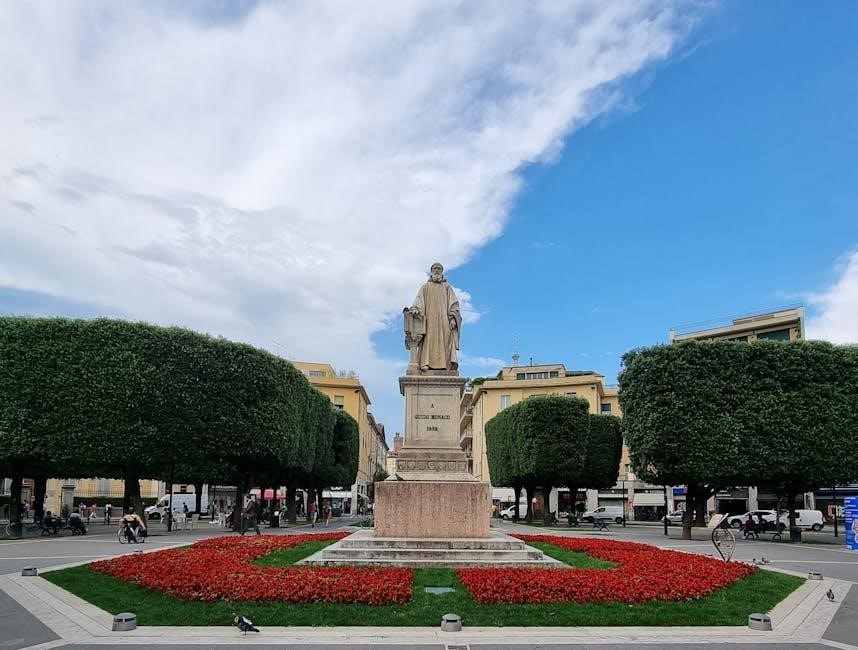
Other Notable Sculptures
Guido Galletti’s notable works include La Vittoria Vigilante and Tondo con la moglie e la figlia Giovanna, showcasing his artistic range and emotional depth in sculpture․
5․1 Il Cristo degli Abissi
Il Cristo degli Abissi (Christ of the Abyss) is Guido Galletti’s most iconic work, a submerged bronze statue of Jesus Christ located in the Mediterranean Sea near San Fruttuoso․ Created in 1954, it was placed underwater to honor divers and sailors who lost their lives at sea․ The statue, standing 2․5 meters tall, depicts Christ with arms raised in invocation, symbolizing peace and protection․ Blessed by Pope Pius XII, it has become a revered site for pilgrims and divers․ Its placement was initiated by Italian diver Duilio Marcante, making it a unique blend of art, faith, and maritime heritage, attracting global attention and admiration․
5․2 La Vittoria Vigilante
La Vittoria Vigilante is another notable work by Guido Galletti, showcasing his mastery in blending symbolism with monumental sculpture․ Created for the Casa dei Mutilati di Genova, this piece embodies vigilance and resilience, reflecting the post-war context․ Its design aligns with Galletti’s transition toward intimism, emphasizing emotional depth․ The sculpture stands as a testament to his ability to capture the essence of human experience through art․ It remains a significant part of his oeuvre, highlighting his contribution to public memorials and his artistic evolution․ This work, like many others, underscores Galletti’s role in preserving historical narratives through sculpture․
5․3 Tondo con la moglie e la figlia Giovanna
Tondo con la moglie e la figlia Giovanna is a captivating piece by Guido Galletti, created during the 1915-1920 period, showcasing his shift towards intimism․ This tondo, a circular composition, depicts Galletti’s wife and daughter, capturing the warmth and intimacy of family life․ The work reflects Galletti’s ability to convey deep emotional nuances, marking a departure from his symbolic earlier works․ It stands as a testament to his artistic versatility, blending personal themes with a refined style, and remains a cherished part of his oeuvre, highlighting his capacity to evoke emotion through sculpture․
Artistic Style and Themes
Guido Galletti’s style evolved from symbolism to intimism, influenced by Nordic sculptors like Constantin Meunier, as seen in works like Martellatore and Pescatore ligure․
6․1 Symbolism in Early Works
Guido Galletti’s early works are characterized by a strong use of symbolism, reflecting his exploration of human emotions and spiritual themes․ Pieces like Prigione del sogno showcase this through intricate, symbolic representations that convey deep introspection and emotional complexity․ His sculptures from this period often featured abstracted forms and metaphorical elements, creating a bridge between reality and the subconscious․ This symbolic approach not only defined his artistic identity but also set the stage for his later transition to more intimate and personal expressions in his art․ Galletti’s ability to embed meaning into form made his early works both enigmatic and thought-provoking, resonating with a broad audience․
6․2 Transition to Intimism
Guido Galletti’s artistic evolution included a notable shift toward Intimism, a style emphasizing personal and domestic themes․ This period, particularly in works like Tondo con la moglie e la figlia Giovanna (1915-1920), reflects a focus on intimate family portrayals, capturing emotional warmth and simplicity․ The sculptures from this phase are characterized by soft, natural forms and a departure from earlier symbolic complexity․ Galletti’s Intimist works showcase his ability to convey profound human connections through subtle expressions and everyday scenes, marking a significant departure from his earlier, more abstracted styles․ This shift highlighted his versatility and deep emotional engagement with his subjects․
6․3 Influence of Nordic Sculptors
Guido Galletti’s work was significantly influenced by Nordic sculptors, particularly Constantin Meunier․ This is evident in pieces like Martellatore (1926), where robust forms and a focus on labor themes are prominent․ Additionally, Pescatore ligure (1927) showcases a simplification of form, possibly under the influence of Jacques Lipchitz․ These works reflect Galletti’s adoption of a more streamlined aesthetic, blending Nordic minimalism with his own Italian sensibility․ This period marked a creative evolution, as Galletti moved towards a more universally relatable style, emphasizing both form and emotion․ His ability to integrate diverse influences underscored his versatility as a sculptor․
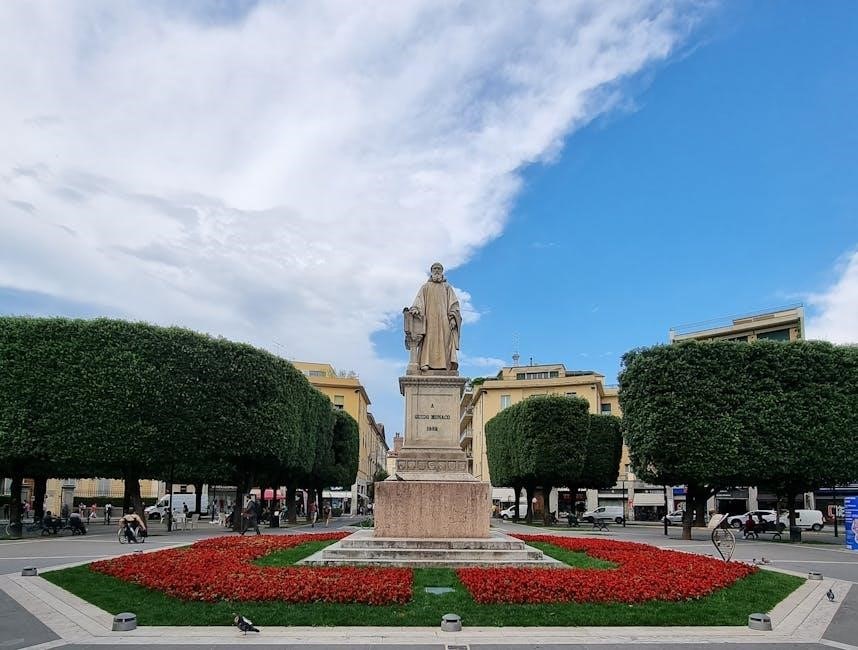
Exhibitions and Recognition
Guido Galletti consistently participated in major art events, including the Venice Biennale (1930-1948) and Rome Quadriennale (1935-1959), solidifying his reputation as a prominent sculptor․
7․1 Venice Biennale Participation
Guido Galletti actively participated in the Venice Biennale from 1930 to 1948, showcasing his sculptures and gaining widespread recognition․ His consistent presence at this prestigious event highlighted his prominence in Italian art, as his works were admired for their emotional depth and formative rigor, aligning with the artistic trends of the time․ This platform played a crucial role in establishing his reputation as a leading sculptor, both nationally and internationally, and contributed to the evolution of his artistic style, which resonated with both critics and audiences during his career․
7․2 Rome Quadriennale Involvement
Guido Galletti was a frequent participant in the Rome Quadriennale, contributing to the event from 1935 to 1959․ This prestigious exhibition provided a platform for him to showcase his sculptures, further solidifying his reputation as a prominent Italian artist․ His works during this period reflected a blend of classical and naturalistic themes, resonating with the artistic sensibilities of the time․ The Quadriennale played a pivotal role in highlighting Galletti’s ability to create pieces that were both monumental and intimate, leaving a lasting impact on the development of modern sculpture and cementing his legacy in the Italian art scene․
7․3 International Art Shows
Guido Galletti’s artistic talent extended beyond Italy, as he participated in numerous international art exhibitions․ His work was showcased in cities such as Paris, Barcelona, Vienna, Brussels, and Zurich, gaining widespread recognition․ Additionally, his sculptures were featured in exhibitions in Argentina, further highlighting his global influence․ These international platforms allowed Galletti to share his unique style, blending classical and naturalistic elements, with a broader audience․ His participation in these events not only solidified his reputation as a prominent sculptor but also contributed to the global appreciation of Italian art during the mid-20th century, leaving a lasting legacy in the international art community․
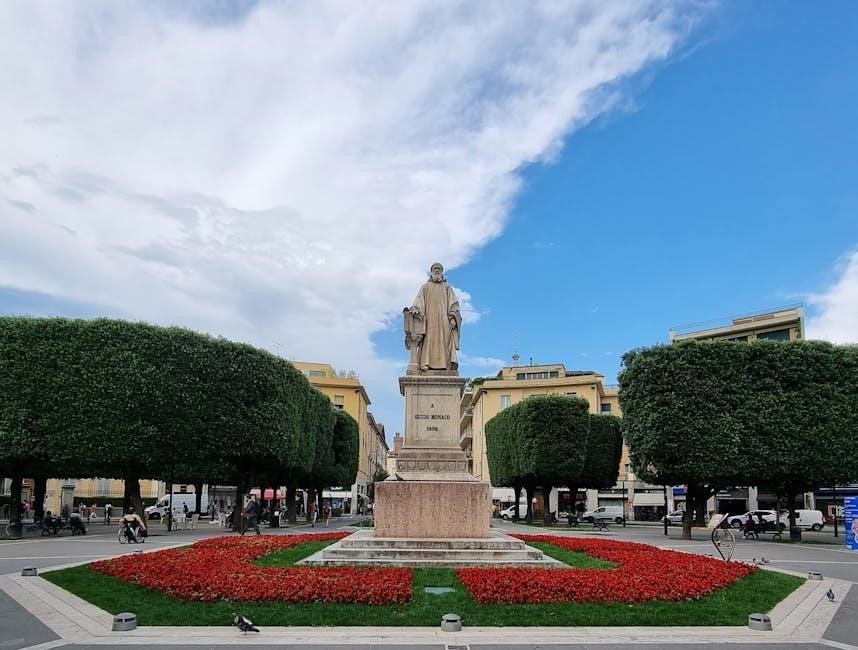
Personal Life and Later Years
Guido Galletti was born in London in 1893 and spent his later years in Genoa, where he passed away in 1977․ He maintained a private life, focusing on his family and artistic passion․
8․1 Family and Personal Interests
Guido Galletti was born in London in 1893 to an Italian family․ He later relocated to Genoa, where he spent most of his life․ Galletti was a devoted family man, often drawing inspiration from his wife and daughter, Giovanna, as seen in his intimate works like Tondo con la moglie e la figlia Giovanna․ Beyond sculpture, he cultivated interests in music and literature, reflecting his well-rounded artistic sensibility․ His personal life remained private, focusing on familial bonds and creative expression․
8․2 Political Involvement
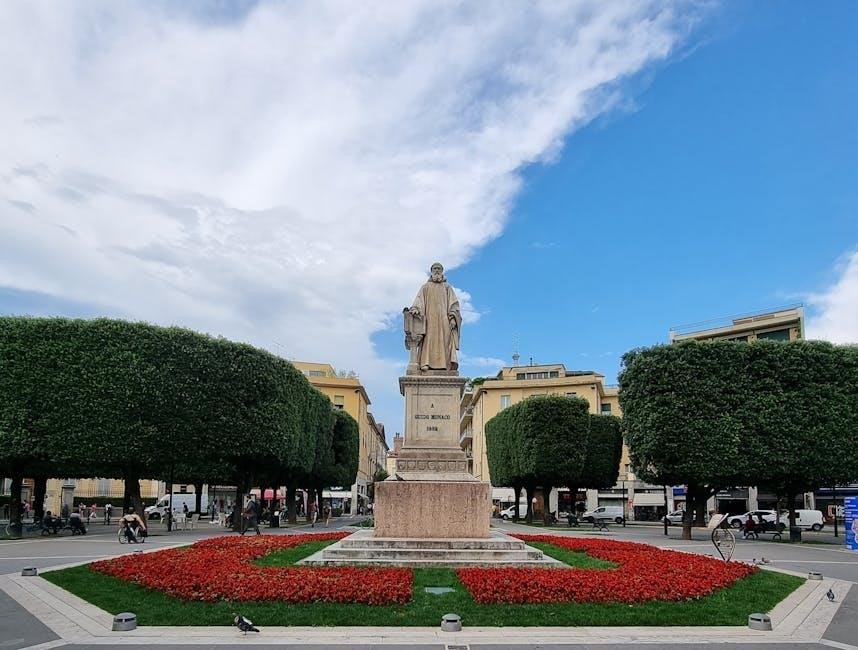
Guido Galletti was also active in local politics, serving as a city councilor in Pieve Santo Stefano․ He represented the movement “Azione Comune Pieve” and was known for his outspoken nature, often addressing issues directly without hesitation․ His political involvement reflected his commitment to public service and community engagement․ Despite being a minority representative, Galletti’s presence was notable, as he consistently voiced his opinions and advocated for change․ His political career complemented his artistic contributions, showcasing his multifaceted personality and dedication to societal matters․
8․3 Death and Legacy
Guido Galletti passed away in Genoa on March 24, 1977, leaving behind a profound legacy in Italian art․ His most iconic work, Christ of the Abyss, remains a timeless symbol of faith and artistry, attracting divers and pilgrims worldwide․ Galletti’s sculptures, characterized by their emotional depth and technical mastery, continue to inspire modern artists․ His contributions to Italian culture are celebrated through his public installations and museum pieces, ensuring his memory endures․ Galletti’s art bridges the spiritual and the physical, creating a lasting impact on both religious and artistic communities․ His legacy is a testament to his innovative spirit and dedication to his craft․
Auctions and Market Value
Guido Galletti’s works are popular in auctions, with prices ranging from $274 to $7,020, reflecting his artistic significance and market demand for his sculptures․
9․1 Notable Auction Sales
Guido Galletti’s sculptures have consistently attracted attention at auctions, with notable sales reflecting his artistic legacy․ His work La Vittoria Vigilante, created for the Casa dei Mutilati in Genoa, is among his most valued pieces․ Auction prices for Galletti’s works range from $274 to $7,020, depending on the size and medium․ Bronze sculptures, such as Christ of the Abyss replicas, often fetch higher prices due to their historical and cultural significance․ Marble works also attract strong bids, showcasing Galletti’s versatility․ His pieces are highly sought after by collectors and institutions, ensuring a steady demand in the art market․
9․2 Price Range of His Works
Guido Galletti’s sculptures are highly valued, with prices ranging from $274 to $7,020 at auction․ The cost varies depending on the size, medium, and historical significance of the piece․ Bronze works, such as smaller replicas of Christ of the Abyss, often fetch higher prices due to their intricate details and cultural importance․ Marble sculptures also command premium prices, reflecting Galletti’s mastery of the medium․ Smaller pieces and sketches tend to fall on the lower end of the spectrum․ Overall, his works are sought after by collectors and institutions, ensuring a robust market presence and steady demand for his art․
9․4 Market Trends for Galletti’s Art
Guido Galletti’s art has seen a steady increase in market value, driven by growing interest in 20th-century Italian sculpture․ His works, particularly bronze and marble pieces, attract collectors and institutions due to their historical significance and emotional depth․ The Christ of the Abyss replicas remain highly sought after, boosting demand․ Additionally, Galletti’s earlier symbolic and intimate works are gaining attention, reflecting a broader appreciation for his diverse artistic phases․ Auction houses report consistent sales, with prices gradually rising as his legacy becomes more widely recognized․ This upward trend underscores Galletti’s enduring influence on modern sculpture and his cultural impact․
Legacy and Impact
Guido Galletti’s legacy endures through his iconic Christ of the Abyss, inspiring religious and artistic admiration․ His sculptures have left a profound cultural and spiritual impact, transcending time and generations․
10․1 Influence on Modern Sculpture
Guido Galletti’s work has profoundly influenced modern sculpture, blending classical techniques with contemporary themes․ His early symbolic pieces and later intimate works inspired a shift toward emotional depth in sculpture․ Galletti’s ability to merge form and emotion resonates with contemporary artists, fostering a connection between traditional craftsmanship and modern expression․ His iconic Christ of the Abyss continues to inspire themes of spirituality and environmental art, making him a pivotal figure in shaping the evolution of sculpture in the 20th century․
10․2 Cultural Significance of His Work
Guido Galletti’s sculptures hold profound cultural significance, transcending art to become symbols of Italian heritage; His Christ of the Abyss is a landmark, drawing global attention and inspiring spiritual reflection․ The statue’s underwater placement has made it a pilgrimage site for divers and a cultural icon, bridging art and faith․ Galletti’s work often reflects themes of memory, spirituality, and human connection, resonating deeply with audiences․ His contributions to public art and religious symbolism have cemented his legacy, making his sculptures integral to Italy’s cultural identity and a source of national pride․ His art continues to inspire and unite people across generations․
10․3 Tourism Impact of His Sculptures
Guido Galletti’s sculptures, particularly the Christ of the Abyss, have become significant tourist attractions․ The submerged statue in the Mediterranean Sea draws divers, pilgrims, and art enthusiasts, fostering a unique connection between spirituality and marine exploration․ Its iconic presence has boosted local tourism, making San Fruttuoso a must-visit destination․ Additionally, Galletti’s other works displayed in public spaces and museums attract art lovers, contributing to Italy’s rich cultural tourism․ His sculptures have not only enriched the nation’s artistic heritage but also enhanced its appeal as a global travel destination, blending faith, history, and natural beauty into unforgettable experiences․
Guido Galletti, a celebrated Italian sculptor, left an indelible mark on modern sculpture․ His iconic Christ of the Abyss continues to inspire, symbolizing the enduring beauty of his creations and faith․
11․1 Summary of Galletti’s Contributions
Guido Galletti was a prominent Italian sculptor whose work significantly impacted modern art․ His most famous creation, Il Cristo degli Abissi, is a timeless masterpiece submerged in the Mediterranean Sea, symbolizing faith and nature’s harmony․ Galletti’s participation in major exhibitions like the Venice Biennale and Rome Quadriennale showcased his artistic prowess․ His sculptures often blended symbolism with intimate, human-centered themes, reflecting a deep emotional connection․ Beyond his art, Galletti’s contributions include inspiring future sculptors and fostering cultural tourism, as his works attract divers and art enthusiasts worldwide․ His legacy endures as a bridge between spirituality and artistic expression․
11․2 Final Thoughts on His Artistic Journey
Guido Galletti’s artistic journey was a testament to his enduring influence on modern sculpture․ His ability to merge spirituality with natural elements created works of profound emotional depth․ From early symbolic explorations to his intimate later pieces, Galletti’s evolution showcased his versatility and innovative spirit․ The iconic “Christ of the Abyss” stands as a pinnacle of his vision, inspiring future artists and captivating global audiences․ His participation in major exhibitions elevated his profile, while his personal growth and experiences infused his art with authenticity․ Galletti’s legacy continues to resonate, connecting people through the universal language of sculpture, leaving an indelible mark on the art world․